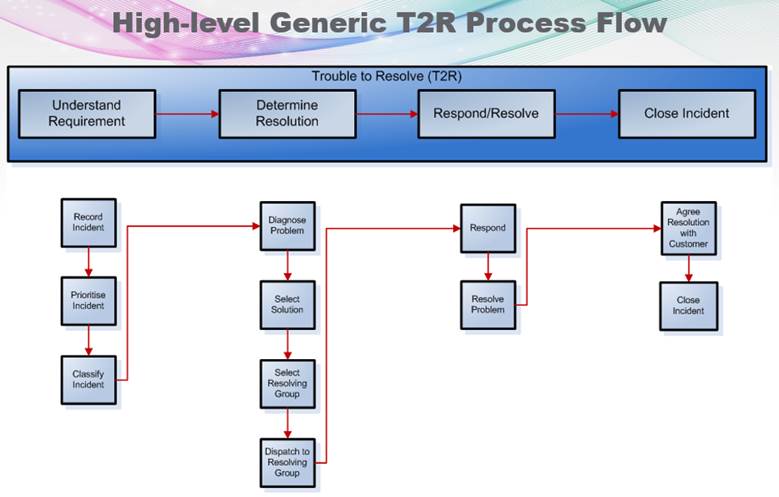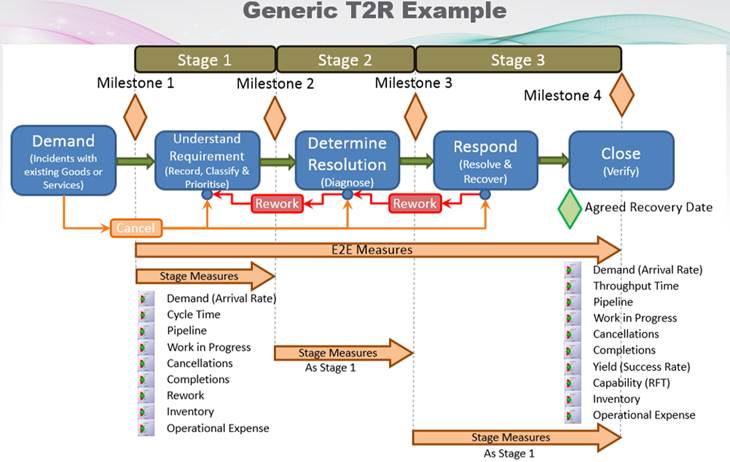The Future of Operational Performance Management – Part 3
01/03/2017

Eleanor Roosevelt, an inspiring leader in her own right who, amongst other things, helped found UNICEF, is reported as saying “Learn from the mistakes of others. You can’t live long enough to make them all yourself”. Seems like common sense to me, but when it comes to looking at what things people measure in the hope of improving business processes, it appears they purposefully go out of their way to ignore her sound advice.
In our previous posts, we considered 3 questions regarding what a standard way of reporting Operational Performance Management (50 years of other people’s mistakes) might look like, comparing this with standard accounting ways of assessing an organisation’s Financial Performance Management (500 years of people’s mistakes)?
- Would it contain just a standard set of measures?
- Would it be presented in a standard way?
- Would it be presented on a monthly basis?
And in our post of last week, we introduced the concept of 4 standard core Process Types (C2D or C2M, P2P, L2C and T2R) seen across public and private sector organisations, and likened them to the standard tools of the Finance profession such as P&L, Balance Sheet and so on. We’re going to take one of these 4 as an example to follow, namely T2R. Examples of T2R (Trouble to Resolve) processes are in Police, Ambulance, Asset/Infrastructure Management, IT Operations / Service Management – and we’ll take an example from the last of these to follow our line of thought. Specifically, let’s look at the typical IT Help Desk, something we have probably all experienced in our connected lives. “My laptop refuses to let me log in”, “I can’t get this letter printed”, “I need a new application loaded”, etc.
A high-level view might look like (breaking the process into 4 transformative or value-add Stages):

You might recognise some of these value-add Stages in the IT Help Desk context – Recording the Incident (Stage 1) will get you a so-called “Trouble-Ticket” as a reference and started along the process. You’ll be asked some questions about the problem, and it will be prioritised and so on. And now applying Ms Roosevelt’s advice, we have found after many 10s of years’ experience, that there are only up to 10 things that need to be measured for performance improvement:

Some Measures may not be relevant in certain contexts, but the principle is that the End2End measures and the Stage by Stage measures are very similar and count no more than 10. And our experience to date shows that these are all that are required for improving performance. Yes, there are other Measures that may be required for achieving Budgets and Targets (where they exist), or for Regulatory and Financial Reporting purposes. But the issue is, in order to know what levers to pull, it will always come back to one or more of the above. These are now akin to the Finance profession’s Revenue, Costs. Profit in a P&L sheet.
When accountants want to establish the financial health of an organisation, they don’t have a séance or a workshop about what they should measure. They go straight to their basic tools of the trade, and only where necessary deviate to more exotic measures. The proposition here is that the Measures above are the basic tools of the trade in Operational Performance Management. The problem is, people come up with all sorts of complex measures which can become impenetrable to find out what levers to pull, yet they will chase these measures month on month thinking they are somehow able to control performance. There are some organisations that offer libraries of 10s, 100s and even 1000s of so-called “standard” KPIs – you can’t live long enough …
We’ll look at some examples of what not to do and answer the final question above next time.
Categories & Tags:
Leave a comment on this post:
You might also like…
Keren Tuv: My Cranfield experience studying Renewable Energy
Hello, my name is Keren, I am from London, UK, and I am studying Renewable Energy MSc. My journey to discovering Cranfield University began when I first decided to return to academia to pursue ...
3D Metal Manufacturing in space: A look into the future
David Rico Sierra, Research Fellow in Additive Manufacturing, was recently involved in an exciting project to manufacture parts using 3D printers in space. Here he reflects on his time working with Airbus in Toulouse… ...
A Legacy of Courage: From India to Britain, Three Generations Find Their Home
My story begins with my grandfather, who plucked up the courage to travel aboard at the age of 22 and start a new life in the UK. I don’t think he would have thought that ...
Cranfield to JLR: mastering mechatronics for a dream career
My name is Jerin Tom, and in 2023 I graduated from Cranfield with an MSc in Automotive Mechatronics. Originally from India, I've always been fascinated by the world of automobiles. Why Cranfield and the ...
Bringing the vision of advanced air mobility closer to reality
Experts at Cranfield University led by Professor Antonios Tsourdos, Head of the Autonomous and Cyber-Physical Systems Centre, are part of the Air Mobility Ecosystem Consortium (AMEC), which aims to demonstrate the commercial and operational ...
Using grey literature in your research: A short guide
As you research and write your thesis, you might come across, or be looking for, ‘grey literature’. This is quite simply material that is either unpublished, or published but not in a commercial form. Types ...






